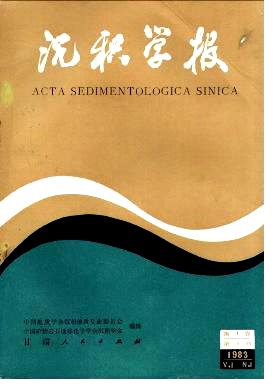HTML
| [1] | (1) Kelley, D.P.,1978, Microbial Ecology, In "The Oil Industry and MicrobialEcosystems",Ed. Chater, K.W.A.,et al, Hey>den and San Ltd.,.12-28. (2) 服部勉,1978,微生物生态入门,东京大学出版社,.105-107. (3) Кузпецов,С,И.,1961,微生物在湖内物质循环中的作用,宋大祥译,科学出版社,.125-235. (4) Richards, F.A.,1965, Anoxic Basins and Fiords, In "Chemical Oceanography",Ed. Riley, J.P.,et al, Academic Press, London,.611-645, (5) SфrensenspirationJ.,et al, 1979, A Comparison of Oxygen, NiTitrate and Sulphate Re- Sediments,Coastal Marine Microbial Ecology, 5.105-115. (6) Jфrgensen, B.B.,1980, Mineralization and the Bacterial Cycling of C, N and Sin Marine Sediments, In "Contemporary Microbial Ecology Ed. Ellood. D.C.,et al, Academic Press, London,.239-252. (7) 王大珍等,1979,微生物在有机质转化中的地质作用,青海湖综合考查报告,科学出版社,. 233-264. (8) Willia m s, J.,et al, 1972, Bacteria Have Destroyed 10% of World Crudes, worldOil, 174( 2),.28-29. (9) Кузнецов,С.И.,1972,Геохимическая дительность микроорганизмов в мссторождеппях полезных ископаедых, Известия А Н СССР Серия Вцотогическал, Ю З,.301-313 (10) Karavaiko,G.I.,1978, Mlicroflora of Land Microewiroarsents and It's Role in the Turover of Substances, In "Environmental Biogeochernistr-, and Geomicrob-iology,Ed. Krumbein, W.E., :1nn :arbor Science,.397-411 (11) Кузнецов, С.И., 1967,Роль мпкроорганизцов в пробрзовапни л Разрущсн-пп месторождений пефти Известия А Н СССР Серил Впологичесгая. Иб,803-818 (12) Traxler,R.W.,otal,1965,Action of Microorganisms on Bitaminoes Materiais:1 , Effect of Bacteria on Asphalt Viscosity ,Appl, Microbiol.,13,838-841 (13) Traxler ,R.W.,etal,1966,Action of Microorganisms on Bituminoes Materials:2. Composition of Low Molecular weight Asphaltic Fractions Analysis,J.aPPL, Chem.,16,266-271 (14) Rozanova,E.P.,et al,1974, Microflora of Oil Deposits"Moscow Scientific Publication (15) N esterov,A.I.,1976, Microflora of C oal一bearing Deposits and It's Geochemical Activity,In “Ecology and Geochmical Activity of Microorganisme’Ed。IYa-nov, M.V.,Moscow Pusbchino Publications,.164-172. (16) Maskalenko, E,M.,etal,1976, Microbiological oxidation of CH4in Coal,In Ecology and Geochemicai A ctivity of Microorganisms E4. lvanov. M.V., Moscow Pushehino Pnblications., 172-177 |






 DownLoad:
DownLoad: